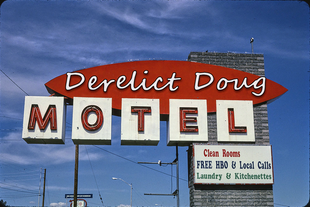
When people around the globe think of the American highway system, images of motels along Route 66 is often what comes to mind. These motels were typically family-owned and operated. Bringing with them a certain kind of kitsch and charm that made its way deep into the American culture. Increasingly these icons are being abandoned, repurposed, or being demolished. With that in mind, I would like to take a moment to reflect on how these icons of American innovation came to be and eventually fell from favor.
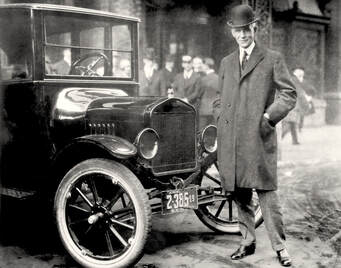
Like all innovation, Motels were created out of necessity. One that began on October 1, 1908, when Henry Ford unleashed his Model-T on the American market. Thanks to his innovation of the assembly line; he was able to offer the Model-T for the shockingly low price of $360. For the first time, the American working class could afford a vehicle and they were hungry to explore their vast country. And this group was growing daily, by 1914 Ford had sold half a million cars. With the advent of Ford’s “Tin Lizzie” car the pace of sales increased. So much so that by 1927 they comprised half of the cars on the road. By this time Mr. Ford had sold over 15 million automobiles.
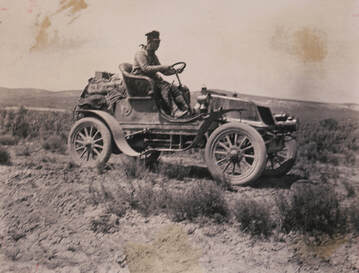
Now that the automobile was ubiquitous the American people's desire to explore was at an all-time high. However, travelers and adventure seekers were growing restless with the local roadways. Many of these roadways were not yet paved and seldom connected from city-to-city. The roads that did connect were long-established trails that were converted for automobile use. Travelers east of the Mississippi River were fortunate to have colonial-era Inns to stay in while traveling between towns. However, these Inns were few-and-far-between. In the western half of the country, the drivers relied on camping and makeshift shelters to rest in between drives. As the number of people on the road increased the cost of the Inns increased too. So much so that they eventually became too expensive for the average American consumer. To help alleviate this problem the U.S. Department of transportation set up camps across the country. The camps were simple and comprised of army surplus tents.
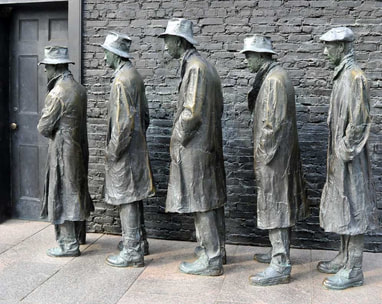
The road improvements that the U.S. citizens wanted would have to wait. After some of the largest economic growth in history, the U.S. stock market suddenly crashed; in 1929. Ushering in the “great depression”. This period in U.S. History was fraught with economic hardship, desperation, and hunger.
Fortunately, by 1933 America was roaring back from the great depression. But many people were still out of work and the roadways had seen little improvement. The Americans' desire to explore had not gone away, it was merely put on hold until the economy was stable. The Work Progress Administration (WPA) and similar organizations were able to put many people back to work by building the roadways and the electrical infrastructure that millions of Americans crave. 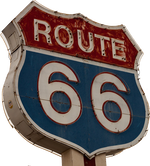
In 1939, a man named John Steinbeck envisioned a road that crosses the country from Chicago to Los Angeles. He called his design “the road of flight”. Later his vision would become the internationally known “U.S. Highway 66” or “Route-66”. The original name was designed to evoke the realities of the great depression-era immigrants and migrants. These were people who were removed from their land by failing crops, heartless banks, and the storms from “the great dust bowl”. In many cases, the land that was taken from them was land that they (or their family) settled and homesteaded.
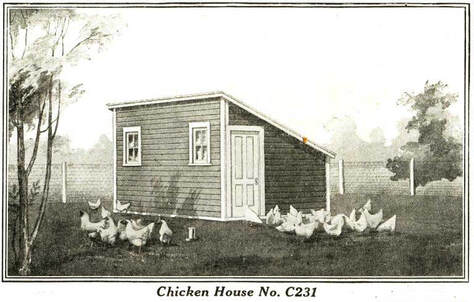
This group struggled to find a sense of home as they drifted along the roads. At this time some of the earliest motel concepts were developing in the Western U.S. These were small, simple structures with a door, a bed, and a window. One of the most commonly used designs was “Sears Roebuck chicken-coops” that were repurposed as motel-like cabin structures. The privately-owned cabins were sometimes painted to match a design theme; such as western homestead or bavarian village. This was one of the earliest attempts to bring a sense of home and familiarity along for the road trip. However; the cabins themselves sported little amenities. Often a bucket of water and wood was included with your cabin, but sheets, pillows, and mattresses were only available with an extra fee.
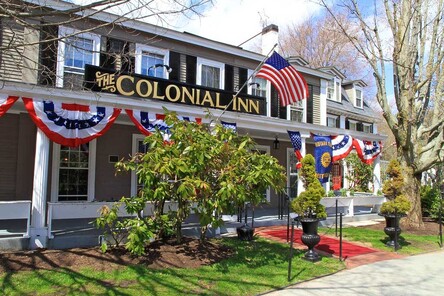
Back in the Eastern U.S., the Colonial-Era Inns were completely full, but an alternative had developed. People began to open up their homes to tourists. These homes would simply place a “Room for Tourists” sign and instantly open a new income stream for their home. Each “tourist-home” was as colorful and unique as its owner. In contrast to today’s hotels, these were commonly found in-town and required searching out to be found. This option gave travelers all of the comforts of home or at least all of the comforts afforded to them by the homeowner.

This practice was so common that a side-industry of printing the signs developed. Buried in attics and deep in antique shops you may still find some of the original cardboard “Rooms for Tourists” signs. While the homes helped to bridge the gap, there were more Americans on the road than there were rooms to rent.
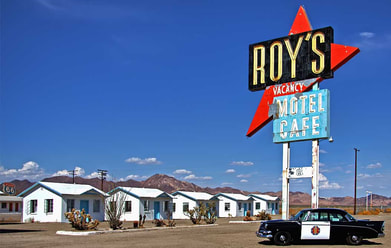
In the 1930s and 1940s the Eastern U.S. concept of Mom and Pop tourist-homes was combined with the cabin concept, developed in the Western U.S. These hybrid properties resembled what we’ve come to know as a motel. At the time they were referred to as “cottage-courts” or “tourist-courts”. Unlike tourist homes or downtown hotels, these were automobile friendly. Many sported carports and filling stations. The cottage court was becoming a classy alternative to damp cabins and smoky campsites. They were designed to catch the eye of the passing and weary travelers. This is where the tradition of silly and gaudy themed Motels came into existence.
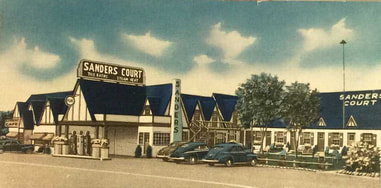
Later cafes and restaurants began to appear alongside cottage-courts. These cafes were the innovation hub for American cuisine, bringing to us some of the staples that we cook to this day. In fact, it was at “The Sander Court & Cafe”, where Harland Sanders, created the first batch of fried chicken. As you may be aware, Harland later took the name the “Kentucky Colonel” and founded the KFC company. To me, it’s somewhat ironic that he left the lodging industry to help create the fast-food industry. Both of these were satellite industries made possible as a result of Henry Fords’ invention and the new roadways.
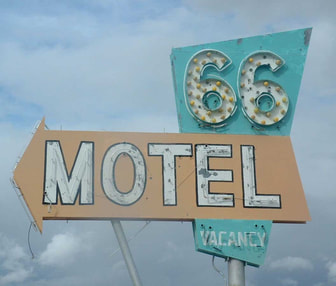
The U.S. Motel industry had its second big recession during World War II. This is because nearly everything needed for a road trip was rationed. All tires, gasoline, and oil went to the war effort. Many of these materials were used to transport troops across the country to be deployed. During this process, soldiers saw areas of the country they wanted to revisit once they had leisure time.
U.S. President, Dwight D. Eisenhower became frustrated with how long it took to transport troops and tanks across the country. He pushed for a Highway system that mimicked the German autobahn. His push succeeded and gave birth to the “Federal Interstate Highway System” (FIHS). This new organization was tasked with constructing four-lane highways that stretched from coast-to-coast. However; this would take half a century to complete and they are still being built on to today. 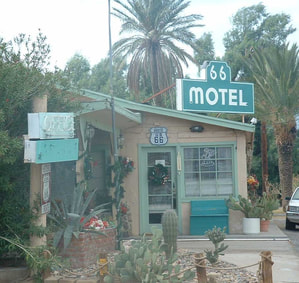
Fortunately for the cottage-court owners, they had many years before the interstate highway system would snake through the country and circumvent the highways they relied on; such as Route 66. This time period was the golden age of the American Motel. Post-war American families were ready to explore the country once again!
At this time the name cottage court gave way to “motor-court”. Further verifying and cementing Americas' love of and reliance on the automobile. At this time, motor courts specifically catered to automobile owners and were no longer individual cabins, rather they were multiple rooms under one roof. Each one brought its own breed of neon lights, bright signs, and eye-catching flair. The buildings themselves were plain and functional concrete block structures. However, they sported elaborate facades that reflected the flavor and style of the region that the hotel was in. Periodically the sparkly facades and signs would invoke regional stereotypes and cultural appropriation. But this was done at a time before we had these considerations. 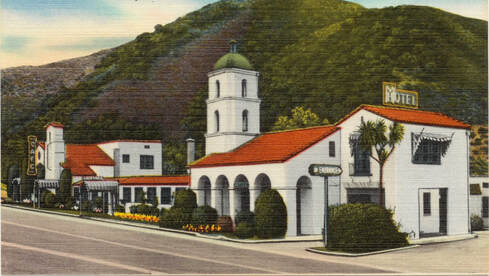
The name “Motel” was coined in San Luis Obispo, CA at the “Milestone Mo-Tel”. The name stuck to this day and is used to refer to a roadside hotel designed primarily for motorists, arranged in a low building, with parking outside.
As most know, the good times came to an end for the majority of these Motels. By the early 1960s, the F.H.I.S. and the interstate highway system were very advanced and had circumvented most of the state highway systems. Family-owned motels and motor courts were being replaced by large chains; such as Howard Johnsons and Holiday Inn. These Hotel chains were able to build and grow alongside the Interstates. The consistency and cleanliness that these chains offered were unparalleled. And for the first time, travelers could cross the country knowing exactly what to expect from their Hotel chains. 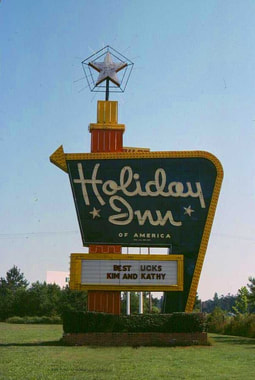
Holiday Inn blurred the distinction between motels and hotels in a manner that was exciting. Their signs were taller, brighter, and very different from the other flickering neon motel signs. The Holiday Inn sign was designed to be seen from the new interstates. As Holiday Inns popped up everywhere, the signs became understood to mean: “Turn here for a predictable, quality experience”.
This consistency and sameness came at a cost. The unique look and feel of the Mom and Pops Motels had a charm and aesthetic that is mimicked and appreciated in pop culture to this day. Much of the signage that you see in modern-day New York or Las Vegas harkens back to the motels of yesterday. It’s amazing to me, what the invention of the automobile has done. Even more fascinating; it was the innovation of a simple cardboard sign stating “Rooms for Travelers”, that sparked countless more inventions, roadside attractions, foods, and most importantly memories. 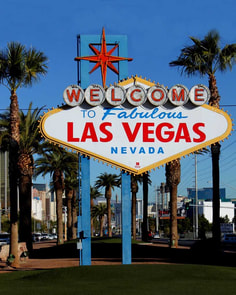
Today most Americans prefer the ease and reliability of the interstate highway system and the numerous Chain Hotels that sit directly off the road. You can still find open and thriving roadside attractions and Motels on state highways. Most often you will find them at the intersection of state highways and interstates. I encourage you to give a Motel a try the next time you find yourself in a position to stay in one. Even if it’s for one night, it's worth it to experience a classic Motel. Especially if you haven't yet had the chance to.
If you have stayed in a vintage motel in the past, please comment below with your experiences and thoughts: American Motel Photos:Music from the video:
1 Comment
|
AuthorThank you for visiting! This is a collection of media from the lost and abandoned corners of the world. Please have a look around, I hope you enjoy. Archives
April 2022
Categories
All
|
Libraries |
Support |
|


